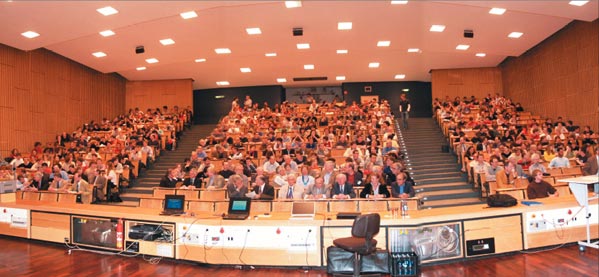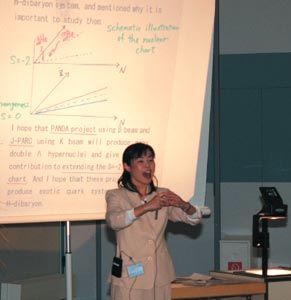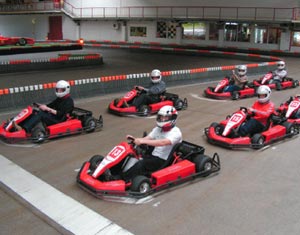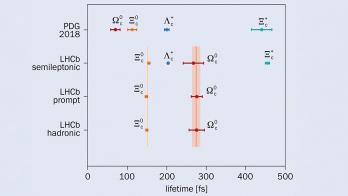The latest in the Low Energy Antiproton Physics series of conferences in Bonn showed that this field of research is increasingly vibrant and exciting, as Walter Oelert describes.
The biennial International Conference on Low Energy Antiproton Physics, LEAP-05, took place in May at the Gustav-Stresemann-Institute in Bonn. Organized by the Jülich Research Centre, it brought together about 150 physicists, including experienced and active users of the former Low Energy Antiproton Ring (LEAR) at CERN and the existing Antiproton Decelerator (AD), as well as potential users of the future Facility of Antiproton and Ion Research (FAIR) at the Gesellschaft für Schwerionenforschung (GSI). The meeting enabled researchers who are interested in using the exciting tool of antiprotons to exchange knowledge about the physics and techniques. The programme covered the whole field of research with antiprotons, from atomic physics at low energies to hadronic reactions at high energies. The conference showed that the field is evolving, with new physics being studied at existing and planned facilities.

Antiprotons at work
The AD began operating in 2000 and its experiments have reported spectacular production rates of antihydrogen atoms as well as topical observations of antiprotonic helium atoms. Though limited to low-energy antiproton research with only a pulsed extracted beam, the AD is regarded as the successor of LEAR after it closed down at the end of 1996, together with the Antiproton Accumulator (AA) and Antiproton Collector (AC). The AC machine was modified to become the AD – a decelerator to slow down the antiproton beam from a momentum of 3.57 GeV/c to 100 MeV/c. During deceleration, the beam undergoes stochastic and electron cooling. The extracted beam intensity is about 3 × 107 antiprotons in a pulse of 90 ns, repeated every 86 s.

The AD delivers antiprotons only at the lowest energy that was available at LEAR, i.e. 5 MeV. For one experiment – ASACUSA – the antiproton beam is further slowed down to about 60 keV with a radio-frequency quadrupole decelerator (RFQD). A possible additional decelerator ring, ELENA, to serve all experiments, would have a cooled beam and would bring a major improvement if installed.

Plans are being realized for a new antiproton facility at GSI, where antiprotons with energy high enough for physics with strange and, especially, charm mesons will be available, in addition to very-low-energy antiprotons. An accelerator complex for research with both ion and antiproton beams is planned. This would provide an outstanding new experimental facility for studying matter at the level of atoms, protons and neutrons and their sub-nuclear constituents: quarks and gluons.
Research on fundamental symmetries was a very important part of the scientific programme at LEAP-05. Over the past 50 years, experimental tests have made physicists discard certain assumptions about symmetry: first, that physics is invariant under parity (P); and second, that it is invariant under the charge-parity (CP) transformation. Direct CP violation has been established in the decays of K-mesons and, recently, B-mesons. On the other hand, CP plus time-reversal (T) invariance, CPT, is believed to hold – and is partly experimentally verified – to a high degree of accuracy.
The symmetries under T, CP and CPT transformations are connected, and the CPT theorem demands that for each particle or element the equivalent antiparticle has the same mass, lifetime, spin and isospin – but an opposite value for all of the additive quantum numbers. The proof (or disproof) of the validity of this basic symmetry may be the key to such fundamental aspects as the universe’s matter-antimatter asymmetry. Physics is still in a phase where it is important to accumulate highly precise experimental data from different leptonic and/or hadronic systems. In this respect, the role of matter-antimatter asymmetry – especially baryonic proton-antiproton physics – is significant.
Probing how antiprotons interact with matter at very low energies is still a topical field for precise studies of the electromagnetic and strong forces and their interplay. High-precision spectroscopy of meta-stable antiprotonic atoms has produced very interesting and unique results. With the accuracy achieved in investigations of antiprotonic helium atoms, the CPT theorem can be tested to a level comparable to the existing bounds from other systems.
An alternative approach is the production and comparison of hydrogen and antihydrogen. A reasonable requirement for a new and unique CPT test of this kind is that it is eventually more stringent than existing tests with leptons and baryons. To make the required high-precision spectroscopic measurements, the hydrogen and antihydrogen atoms have to be at such low temperatures that laser cooling of trapped atoms, which is possible owing to the development of a continuous Lyman-alpha laser, appears to be necessary. Once all the basic technical requirements to produce antihydrogen atoms have been explored and optimized, tests of the gravitational force on antimatter will also be possible, free from the problems associated with charged particles.
When describing the nucleon-antinucleon (N-Nbar) interaction, it is implicitly assumed that the six-quark N-Nbar system can be regarded as a product of quark-antiquark nucleon wave functions with a complex potential that is dominated by the distance between the nucleons. Such a potential predicts a spectrum of many states, if the annihilation part is ignored. There is a rich dynamics of resonances or bound states around thresholds, where the annihilation effects are less dominant, since the phase space for the decay into meson resonances is more restricted. However, the transition from an N-Nbar system to a multiquark state, where quarks and antiquarks interact directly by gluon exchange, must be fully understood before invoking exotic mechanisms based on details of the interaction. New dedicated experiments could determine the energy and the quantum numbers of an N-Nbar system, clarifying the long-range interaction.
Probing the strong interaction
Antiproton beams are an excellent tool for addressing the regime of strong coupling. In antiproton-proton annihilations, particles with gluonic degrees of freedom as well as particle-antiparticle pairs are copiously produced, allowing spectroscopic studies with unprecedented statistics and precision. Phenomena arise that represent open problems in quantum chromodynamics (QCD) as they have their origin in the specific properties of the strong interaction and represent a major intellectual challenge. Quarks are confined within hadrons; the hadron mass does not balance with the summed mass of the quarks contained; and the characteristic self-interaction among gluons should allow for the existence of glue-balls and hybrids, consisting mainly of gluons and/or glue plus a quark-antiquark pair, respectively.
The charmonium system has turned out to be a powerful tool for understanding the strong interaction. The spectroscopy of the charm-anticharm system helped in tuning potential models of mesons in which the gluon condensate is determined. The gluon condensate is closely related to the charmonium masses since it is the gluon and quark-antiquark condensates that represent the energy density of the QCD vacuum. The QCD spectrum is much richer than in the simple quark model, as the gluons, which mediate the strong force between quarks, can also act as the principle components of entirely new types of hadronic matter: glueballs and hybrids.
The additional degrees of freedom carried by gluons allow glueballs and hybrids to have exotic quantum numbers that are forbidden for normal mesons and other fermion-antifermion systems. Such exotic systems can be identified by observing an overpopulation in the experimental meson spectrum, and by comparing their properties with predictions from models for lattice QCD considerations. Antiproton annihilation experiments have produced very promising results for gluonic hadrons.
A special session spiritedly discussed applications of antimatter, radiation and particle detection, covering well established medical treatments, diagnostic routines, plans for future developments and using nuclear physics to locate land-mines to reduce injuries, especially to children.
One highlight of the conference was a public presentation in the overcrowded Wolfgang Paul Lecture Hall at the University of Bonn, where more than 600 people listened to presentations on modern, high-quality physics and its excitements. At least some listeners were disappointed when these lectures stopped after four hours! The entire LEAP-05 was a brilliant preview of the physics to come from using antiprotons as a special and very effective tool.
• The conference was sponsored by Forschungszentrum Jülich; Deutsche Forschungsgemeinschaft; HiEnergy Technologies, Inc; Deutsche Telekom Stiftung; iseg Spezialelektronik GmbH; Bicron; W-IE-NER, Plein & Baus GmbH; and Pfeiffer Vacuum.







